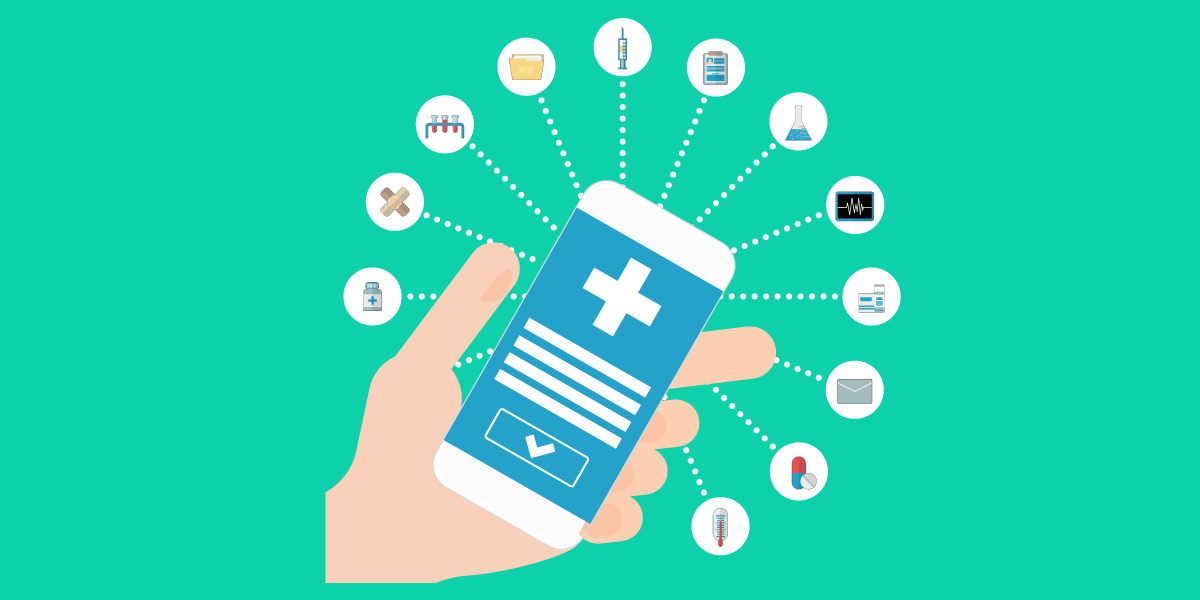SMART on FHIR: Big Gains, Big Challenges
Kenneth Mandl, MD, MPH, director of the Computational Health Informatics Program at Boston Children's Hospital, discusses opportunities, limits, and hurdles for health care data apps.
Kenneth Mandl, MD, MPH, director of the Computational Health Informatics Program at Boston Children's Hospital, discusses opportunities, limits, and hurdles for health care data apps.

New technologies are making it possible to collect, mine, and use a vast trove of health care data generated at multiple points in the care delivery system. These advances promise to spur medical innovation, increase efficiency, and improve patient care. Yet big challenges in interoperability must be overcome to realize these gains.
Kenneth Mandl, MD, MPH, the Donald A.B. Lindberg Professor of Pediatrics and Biomedical Informatics at Harvard Medical School, directs the Computational Health Informatics Program (CHIP) at Boston Children’s Hospital. He answers three questions for HMS Executive Education on the limits of health care data sharing, the promise of SMART on FHIR, and the biggest hurdles to accessing and sharing health care data through apps.
Interview condensed and edited for clarity
Electronic health records (EHRs) have traditionally functioned as closed, monolithic systems. Beyond technical issues limiting data sharing, there are policy and social barriers, including limited will by health systems to share data with patients and across organizations.
The U.S. made a $48 billion investment to adopt health IT and EHRs. The goal was to improve patient care and outcomes while also increasing efficiency and reducing costs. Apple, Google, and Microsoft are taking the lead in adopting standards to promote data liquidity and innovative data use. But we still face significant challenges in making health care data work for doctors, patients, and researchers.
To address many of these concerns, we developed SMART on FHIR, an open, standardized means of exchanging data between EHRs and apps. It’s an application programming interface (API) specification.
We were inspired ten years ago by the original iPhone API, which makes it easy for people to add or delete apps as they wish. SMART on FHIR enables users of different EHR platforms to add, remove, or reuse apps. Patients and providers can download these apps to access data from the EHR. SMART on FHIR also helps innovators develop apps that harness capabilities in genomics, artificial intelligence, decision support, and data visualization and bring this information to the point of care. Many proprietary and open source apps to improve patient care and research are available through the SMART Health IT Project.
We are also developing a new standard, Flat FHIR (or FHIR Bulk Data), which enables the exchange of population-level data. Currently, it takes a team of hospital IT experts to retrieve population data from EHRs. The Flat FHIR project drives toward “push-button population health.” Patients will benefit when their doctors can offer insights from population data that can inform medical decisions.
One barrier has been the rate at which these technologies are implemented and the extent to which they are implemented. For example, many of the major EHR vendors have now incorporated SMART on FHIR into their products, but only a limited amount of data can be shared. In the future, we should be able to share all patient data across the interface, including doctors’ notes and medical images. Access to this data would provide a tremendous amount of insight into individual health, population health, and even into basic mechanisms of disease.
Another barrier is concern about patient privacy. It’s important to understand that any organization or app developer can only access a patient’s data with legal authorization. Hospitals and other institutions are bound by regulations to preserve patient privacy. Access to population-level data for research requires IRB approval. The law hasn’t changed. Our technology has. We now have the mechanism and technical capability to share data across platforms bound by laws and regulations.
Although the free market has not produced an interoperable data system, meaningful use regulations going into effect in 2019 will require health care institutions to make it easier for patients to obtain electronic copies of their medical data across an API. Regulations are also expected soon to implement provisions of the 21st Century Cures Act, which will make it easier for patients to authorize other parties, such as app developers, to access their data.
It’s getting easier all the time to take advantage of this technology. Through a project called Argonaut, the largest EHR vendors have built SMART on FHIR into their products.
Many major U.S. health systems are using SMART on FHIR apps to provide patient care, including Boston Children’s Hospital, Duke Medicine, Geisinger Health, Intermountain Healthcare, and Partners Healthcare. Apple’s Health Records feature uses SMART on FHIR so that patients can access their health data from their health care providers and share it with iOS apps. More than 500 hospitals are participating.
Continue the conversation on Twitter by connecting with us @HMS_ExecEd or with Dr. Mandl @mandl. Join Dr. Mandl in our spring 2019 program, Inside the Health Care Ecosystem: Strategic Insights for Business Leaders.
Learn more about how Apple is using SMART on FHIR to give patients control of their health records at our Innovations in Digital Health program, led by John Halamka, March 12-14.
-Ann MacDonald
Access the latest insights into the business and practice of health care, brought to you by Harvard Medical School.
From digital health to trends in patient care, our open enrollment programs are designed for leaders whose work impacts health care.
© 2025 by the President and Fellows of Harvard College